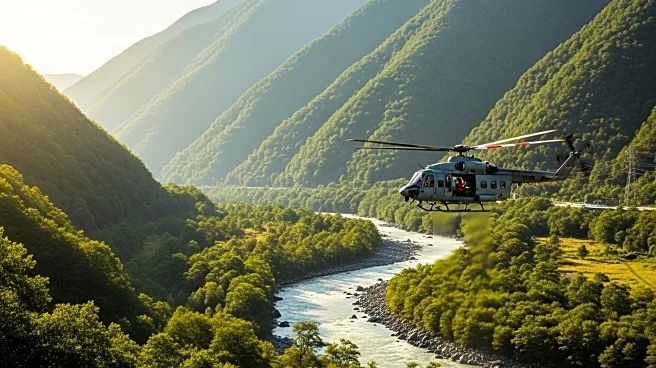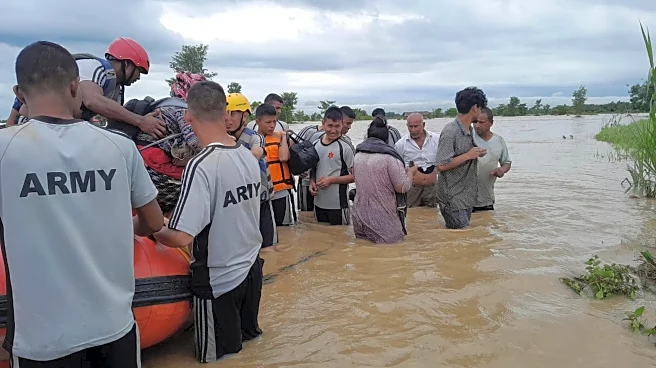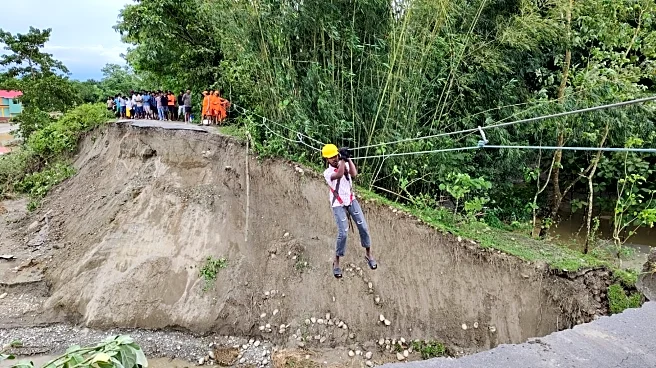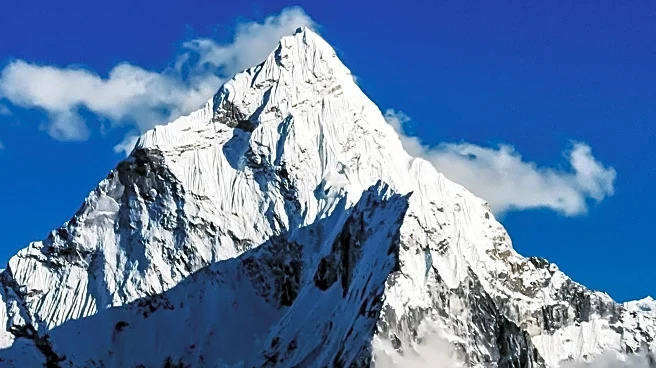What's Happening?
Severe rainfall in Nepal has led to landslides and flooding, resulting in the deaths of at least 44 people, with five others reported missing. The eastern mountain district of Illam was particularly affected, with entire villages being swept away. The heavy rainfall, which began on Friday, has hampered rescue efforts, with many roads blocked or destroyed. The Nepalese government has deployed helicopters for medical evacuations and ground troops to assist in moving people to safer areas. The government has also issued a severe rainfall warning and closed major highways as a precaution.
Why It's Important?
The natural disaster in Nepal highlights the vulnerability of mountainous regions to extreme weather events, which are becoming more frequent due to climate change. The impact on local communities is severe, with loss of life, homes, and infrastructure. The situation underscores the need for improved disaster preparedness and response strategies in Nepal and similar regions. The international community, including neighboring India, has expressed support, indicating the potential for cross-border cooperation in disaster management.
What's Next?
The Nepalese government is likely to continue its rescue and relief operations, focusing on reaching isolated communities and providing necessary aid. The reopening of highways and restoration of transportation links will be critical for ongoing relief efforts. The international response, particularly from India, may involve logistical and material support. Long-term, Nepal may need to invest in infrastructure that can withstand such extreme weather events and develop more robust early warning systems.
Beyond the Headlines
The disaster raises questions about the impact of climate change on monsoon patterns in South Asia. The increased frequency and intensity of such events could lead to more significant humanitarian challenges in the future. Additionally, the disaster may prompt discussions on sustainable development practices in vulnerable regions to mitigate the impact of climate-related disasters.











